We are often told the city does not have the money to plant and maintain enough vegetation to truly shade our neighborhoods. Individual citizens sometimes say they don’t have the skill, physical ability, or knowledge to plant and care for a tree.
So, we work with these neighbors and others to plant rain and hardy native trees and understory plants; and then steward those plantings. That way, those who live closest to their section of the neighborhood forest, and who care most about it, are able to well take care of the forest they help plant and love.
Our hands-on Work & Learn Stewarding Parties offer many different opportunities to gain new skills and experience as you help enhance sections of the neighborhood forest. It’s also a great opportunity to get to know more of your neighbors and folks from neighboring neighborhoods as we help each other out. We plan these parties around neighbors and areas of the neighborhood forest needing help. See figures 4A-F below for progressive work done in a water-harvesting and pruning & mulching Work & Learn Stewarding Party…
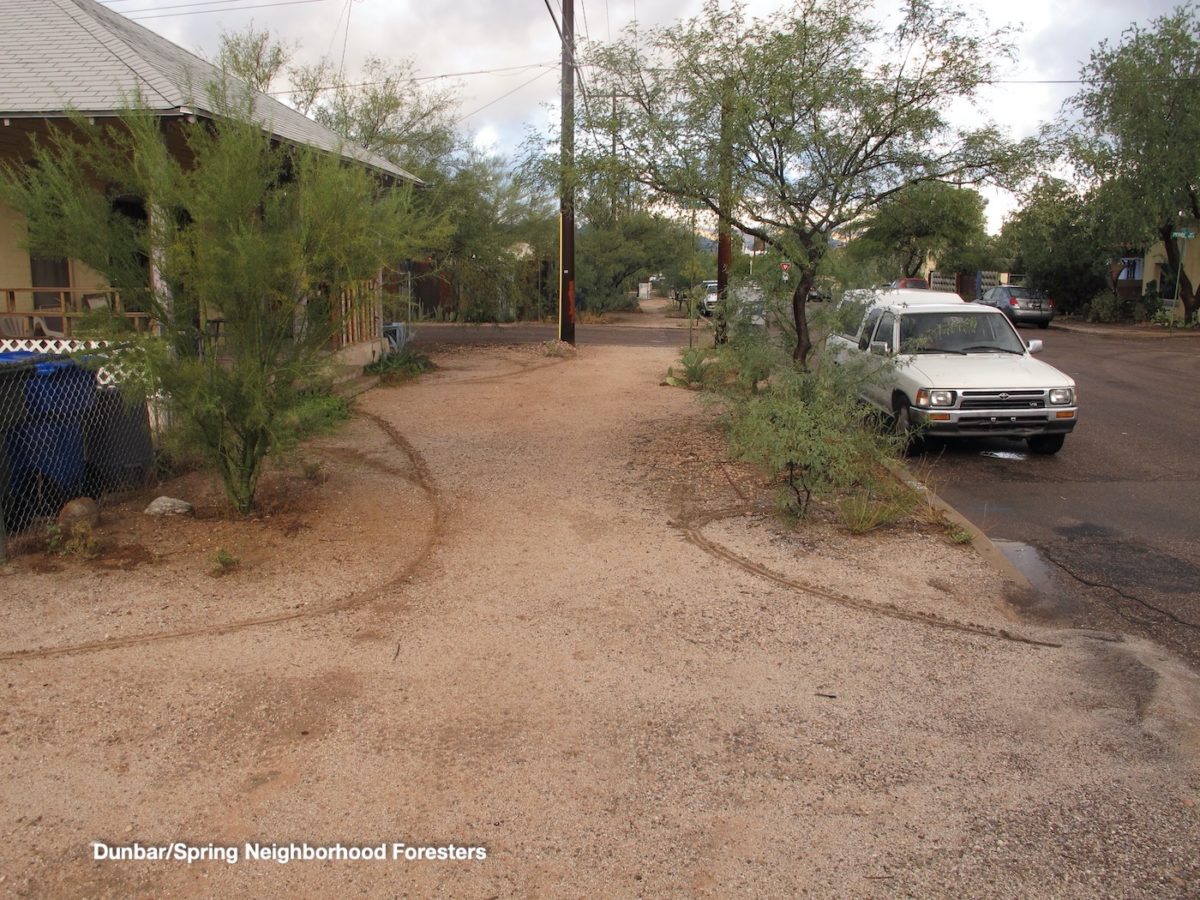
Photo: Brad Lancaster
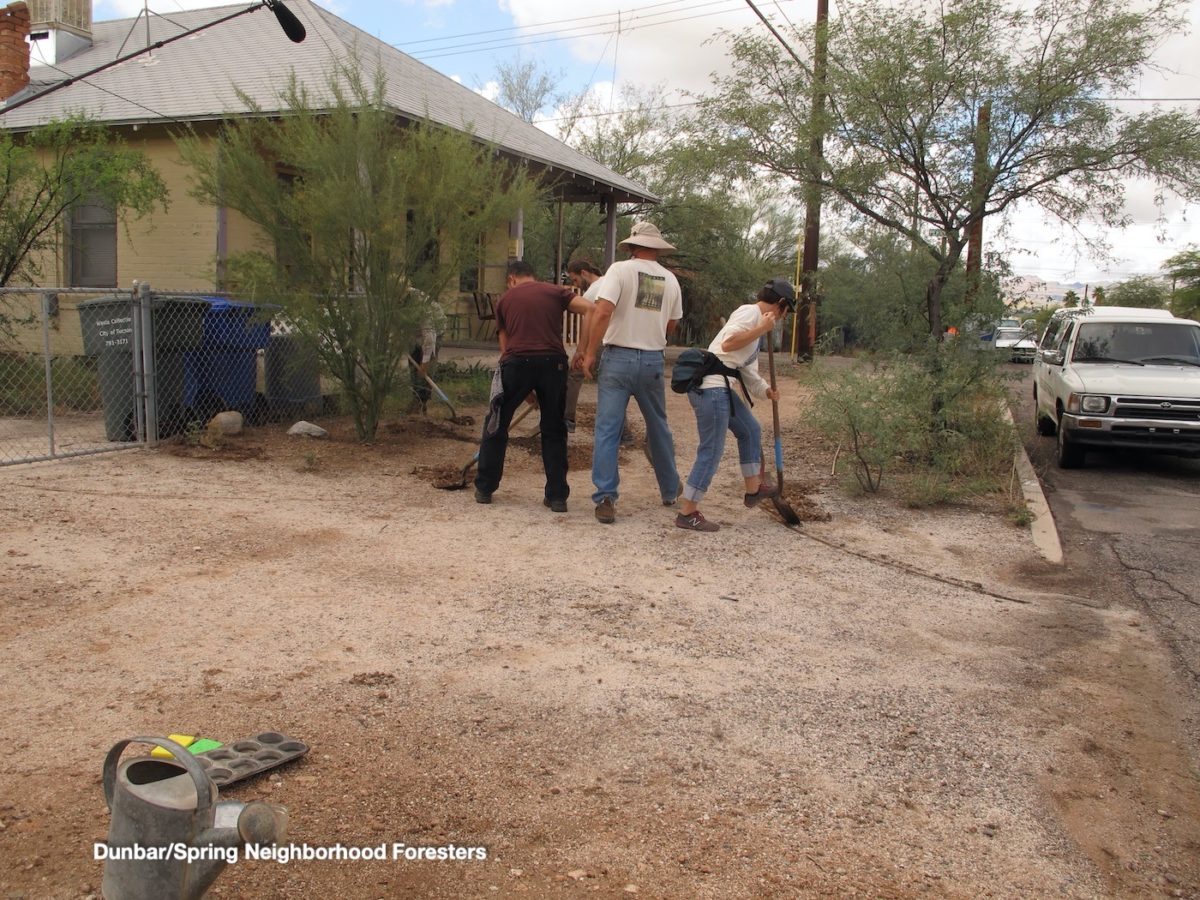
Photo: Brad Lancaster
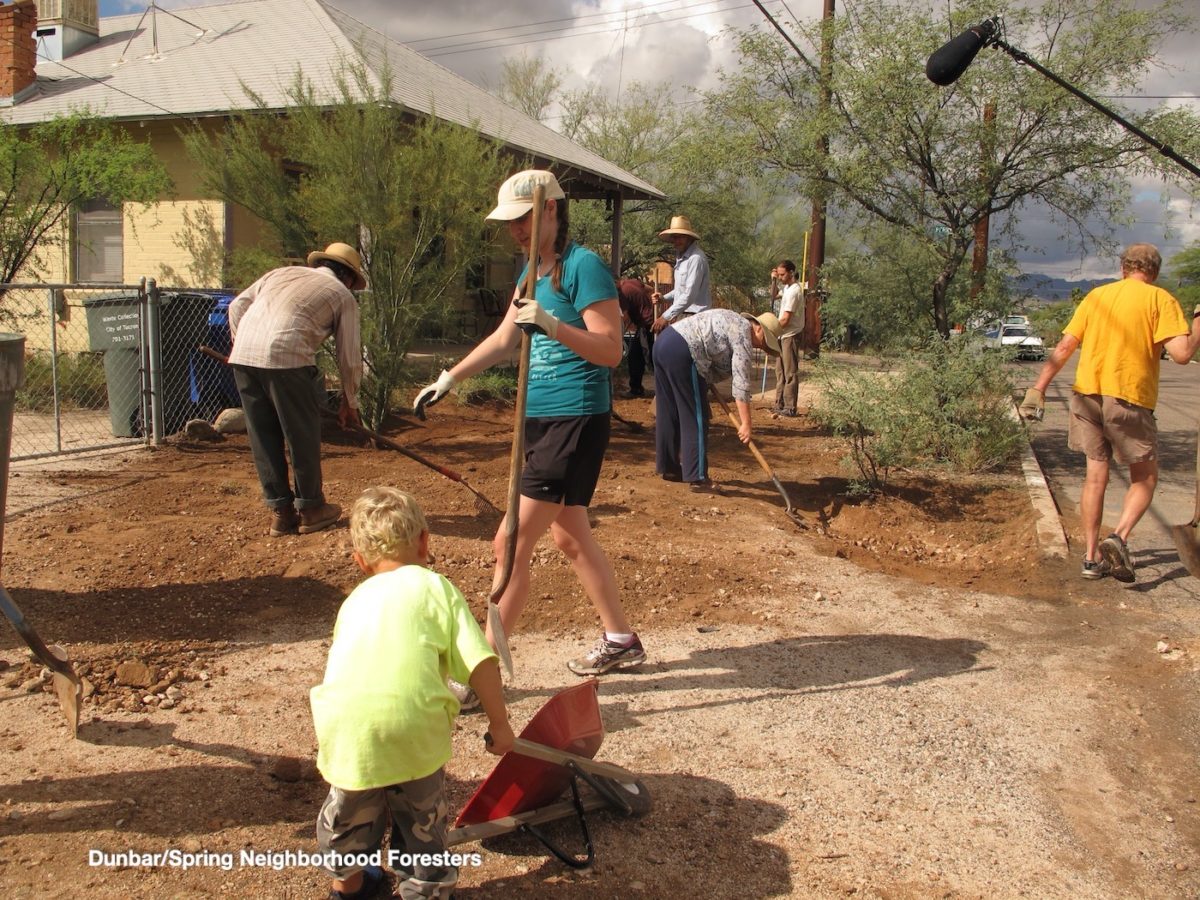
Photo: Brad Lancaster
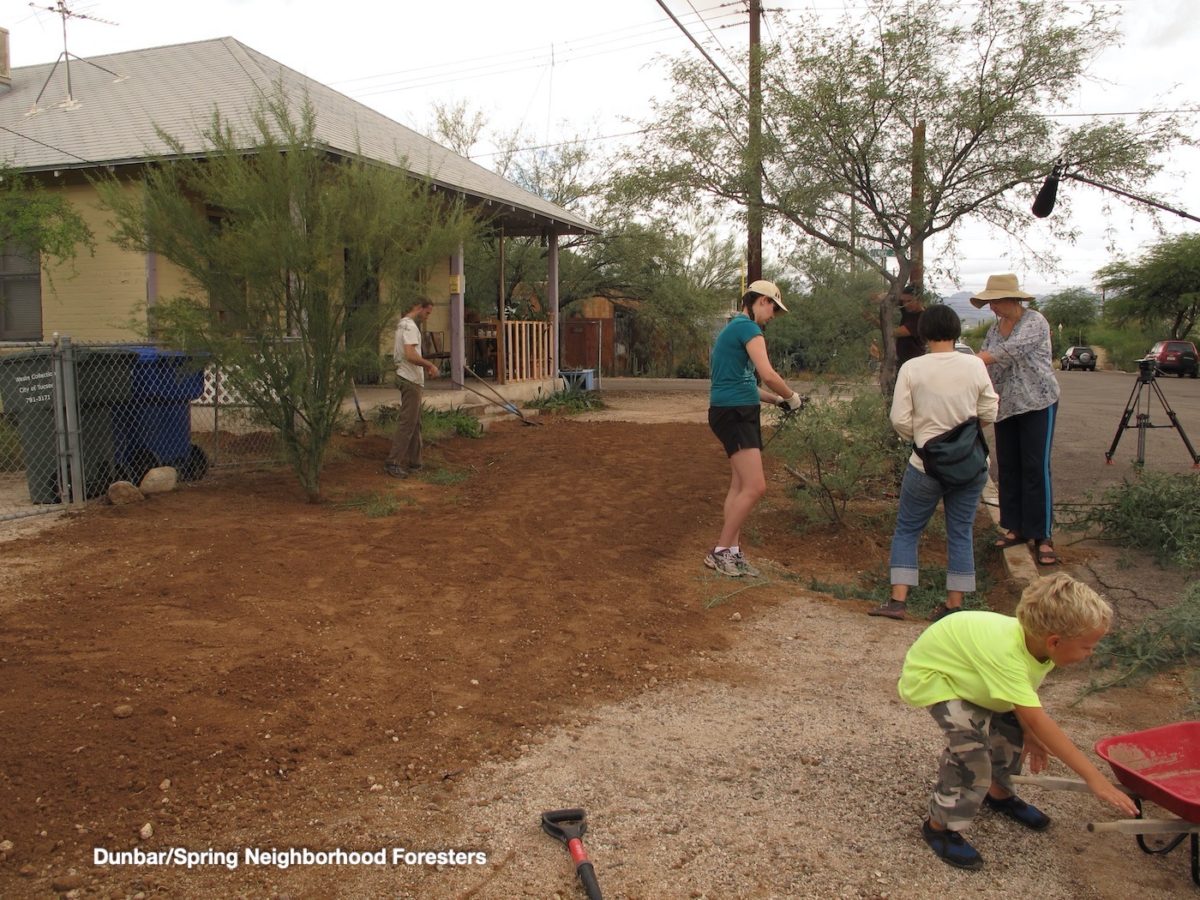
Photo: Brad Lancaster

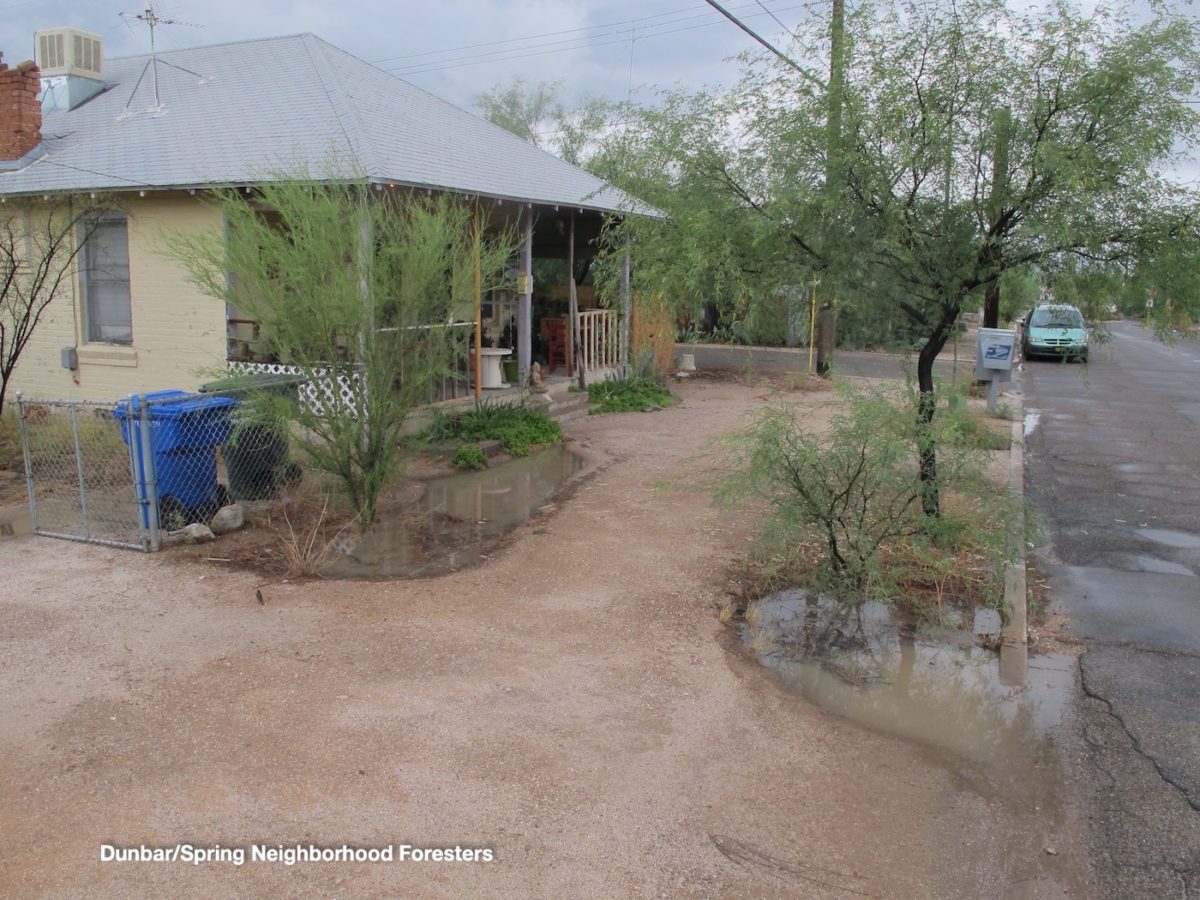
Photo: Brad Lancaster
For more info…
• Sign up with us to be notified of Neighborhood Forester events in Tucson, Arizona
• Check out our Be a Neighborhood Forester page for our Aims & Goals, Origins, Regular Events and more
• Check out our Four Levels of Neighborhood Foresters page for different levels of commitment and support
